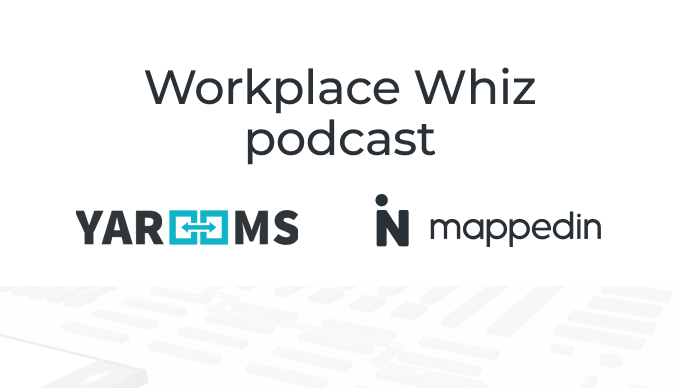Return to Resources
The MapScaping Podcast: Finding Stuff Indoors with Hongwei Liu
May 23, 2024
5 min read
Recently, Mappedin Founder & CEO, Hongwei Liu, was a guest on an episode of The MapScaping Podcast, which covers amazing work being done in the geospatial industry.
In the episode, Hongwei and host Daniel O’Donoghue dive deep into indoor mapping, some of the challenges indoor maps present, the use cases behind indoor mapping, and predictions about the future.
Other key discussion topics include:
Why indoor maps are important and the demand is growing
What is Mappedin’s approach to solving customer challenges
How technological advances like LiDAR, AI, and digital twins make an impact (or not)
When indoor positioning and indoor maps come together to drive operational success
Hongwei shares that less than one percent of indoor spaces have been mapped. He shares that indoor mapping is currently in high demand. Before the world caught on to its benefits, the focus was solely on outdoor maps.
There are unique challenges to mapping the indoors. Not only are most indoor spaces private, they require much more detailed information than outdoor maps. Indoor environments and especially the unique location-based attributes of spaces are continually changing. For instance, details such as desks, meeting rooms, and break rooms in an office need to be considered. There are similarities, however, in the ways the utility of indoor and outdoor datasets increase over time. For example, outdoor mapping became much more useful to a larger market after everybody owned digital devices with Global Positioning System (GPS) capabilities. Today, outdoor maps are commonplace and the practical usage of indoor maps will soon follow.
“Now, everybody’s talking about digital applications inside buildings. How do you optimize logistics in a warehouse? Every mall must do what we’ve now standardized because people just expect it.” - Hongwei Liu, Founder & CEO of Mappedin

Listen to the full podcast episode 🎧
Indoor Mapping Topics Discussed In Depth
Due to the rise of indoor maps, environments like airports run more efficiently, hospitals have the infrastructure to help more people, and tools are being built to keep indoor maps and datasets up to date.
When it comes to use cases for indoor mapping, wayfinding is always the first on the list. When mapmakers start to dive into analysis and optimization, that’s when the return on investment (ROI) starts to show for investing in mapping capabilities. Depending on the space they’re working with, mapmakers ask themselves questions like:
What’s the best way to lay out my warehouse?
What’s the best way to lay out my office?
What’s the occupancy?
How do I visualize where my physical assets are being used?
Mappedin puts mapmaking tools in customers’ hands
From the beginning, the focus has been on enabling maps and wayfinding applications for the everyday person already scribbling their map on a piece of paper. In the early days, Mappedin customers would send in PDFs with proposed changes to their indoor maps. The earliest versions of our current offerings were built to solve internal pain points that stemmed from these requests. We built tools for ourselves into our Web SDK, made tools to collaborate, and then passed these features on to our customers. The main delight is giving our customers the easy-to-use tools they need to map and maintain information themselves. At Mappedin, we are focused on the mapmaker and their jobs to be done.
The Mapmaking Experience
Mappedin customers, including those using our self-serve product, can update and maintain their maps as living documents. We’ve seen individual mapmakers make all kinds of maps from schools to animal shelters.
With a Mappedin map, the source of truth for the map’s details is human. Our indoor mapping tools are designed with people in mind. We give people the ability to work with existing data like a floorplan, particularly to avoid the challenges that come with private indoor environments. With Mappedin’s AI, mapmakers can quickly annotate what they recognize: doors, windows, fire safety symbols, elevators, escalators, staircases, and more. We’ve worked to make the AI feel natural and look invisible to encourage daily usage and updating as needed since about 10% of the indoors is wrong or out of date at any given time.
The Future of Indoor Mapping
What is possible has already been done with the outdoors. The use cases for both indoor and outdoor maps are tangible and starting to merge. Our mapmakers have mapped college campuses, made it easy to find hotels based on activities visitors might want to participate in, and used them to aid public safety.
With the idea of “one map everywhere,” the prediction is that the majority of indoor maps will be constantly maintained by at least one person in the next five years. As well, indoor mapping will become a ubiquitous part of building infrastructure like Wi-Fi.
Want to hear the full conversation? Listen to “Finding Stuff Indoors” on The Mapscaping Podcast.


